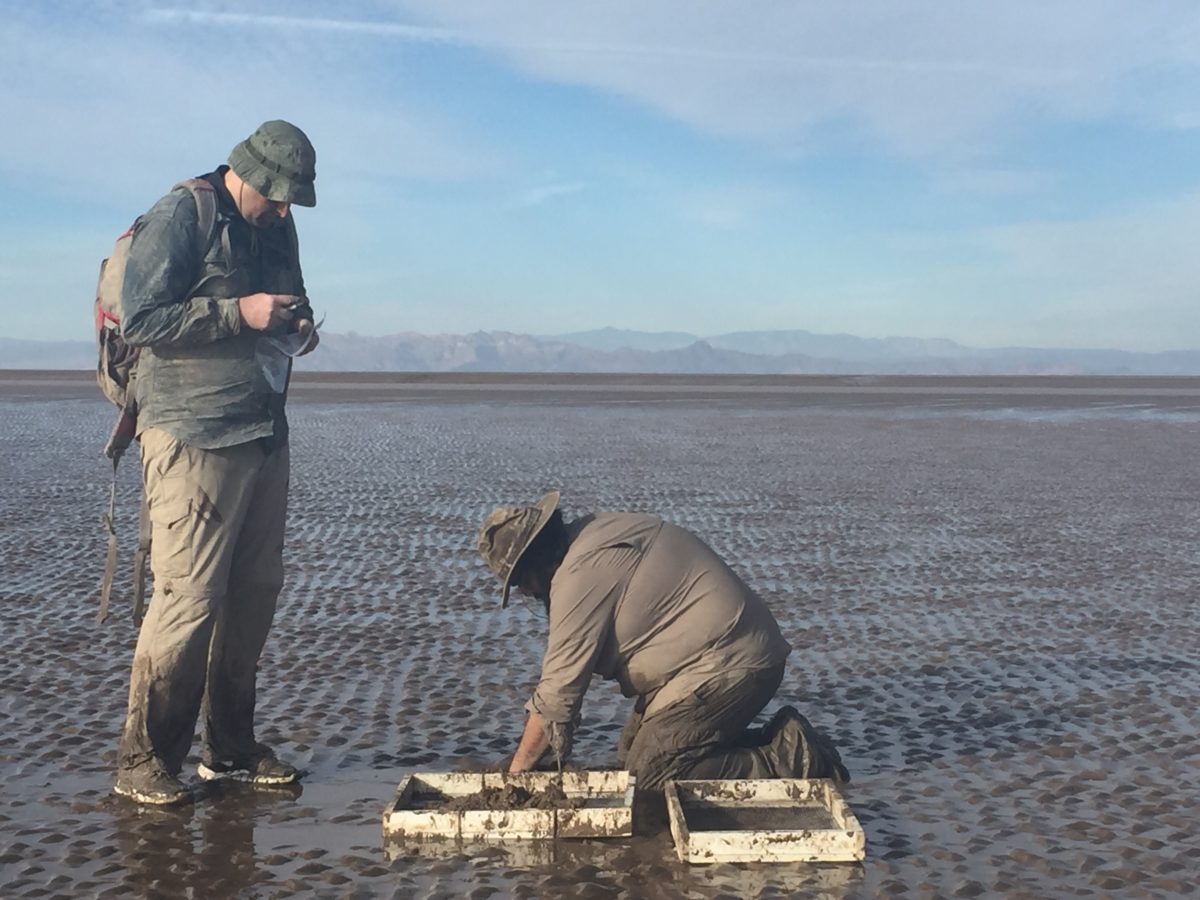Chapter contents:
Conservation Paleobiology
– 1. Foundations in Conservation Biology
– 2. Approaches in Conservation Paleobiology ←
–– 2.1 Near-time Approaches
–– 2.2 Deep-time Approaches
– 3. Deliverables from Conservation Paleobiology
– 4. Barriers to Applying Conservation Paleobiology
Above image: Sampling the molluscan community on the tidal flat in the Colorado River delta. Photo by Jansen Smith.
Overview
Studies in conservation paleobiology tend to focus on either the near- or deep-time geohistorical record. The near-time record, which extends from the present day to the start of the Quaternary Period (2.6 million years ago), includes many of the species, communities, and ecosystems we are familiar with today. With this more familiar fossil record, conservation paleobiologists take approaches to: (1) set baselines to evaluate effects of disturbance; (2) evaluate biological responses to human actions and natural processes, and differentiate between the effects of the two; (3) quantify the natural variability in ecosystems; (4) identify ecological legacies that are unexplainable based on present biodiversity. Because the species are familiar and the record is more complete, studies using these approaches have the potential to be directly applied to the conservation decision-making process.
Deep-time approaches to conservation paleobiology evaluate the older record (>2.6 million years old), wherein the organisms, communities, and ecosystems are less similar to those of today. Though the deeper record is less directly comparable to the present-day, it contains useful information as an archive of repeated natural experiments. These natural experiments are often driven by stressors similar to those impacting ecosystems today (e.g., climate change; ocean acidification) and portray a range of scenarios for how organisms respond to those stressors. These scenarios from the past, which often include conditions that have not been experienced by humans, can be used to contextualize biological responses to present-day stressors and to build scenarios for the future.
Usage
Unless otherwise indicated, the written and visual content on this page is licensed under a Creative Commons Attribution-NonCommercial-Share Alike 4.0 International License. This page was written by Jansen A. Smith. See captions of individual images for attributions. See original source material for licenses associated with video and/or 3D model content.




